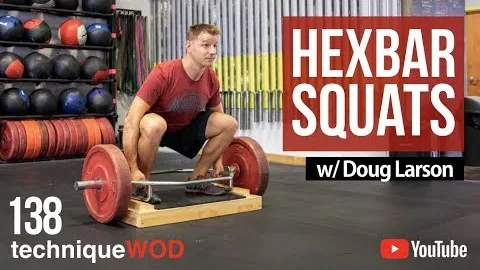
Are you looking to enhance your lower body strength and power? Look no further than the hex bar squat exercise! This compound movement targets multiple muscle groups simultaneously, making it an efficient and effective exercise for achieving your fitness goals. In this comprehensive guide, we will provide you with everything you need to know about the hex bar squat, including proper form, benefits, variations, and tips for incorporating it into your workout routine.
The hex bar squat, also known as a trap bar squat or deadlift squat, is a variation of the traditional barbell squat. Instead of using a standard barbell, the hex bar (a hexagonal-shaped frame with two parallel handles) is used. The design of the hex bar allows you to stand inside and grip the handles, placing your body in a more upright position compared to a back squat. This modified position reduces stress on the lower back while still targeting the muscles of the lower body.
The hex bar squat engages multiple muscle groups, including the quadriceps, hamstrings, glutes, and calves. The grip position and balanced weight distribution of the hex bar allow for a more natural and comfortable movement pattern, resulting in increased muscle activation compared to other squat variations.
The hex bar's unique design and grip placement put less stress on the lower back compared to a traditional back squat. This makes it an excellent option for individuals with lower back issues or those looking to minimize strain on their lumbar spine.
The hex bar squat mimics the movement patterns involved in various sports, such as jumping, sprinting, or tackling. By incorporating hex bar squats into your training program, you can improve your explosive power, speed, and overall performance in athletic activities.
Unlike some high-impact exercises, the hex bar squat is relatively low impact and places less stress on the joints. This makes it a suitable exercise for individuals recovering from injuries or dealing with joint-related conditions, such as arthritis.
The hex bar deadlift is a variation where you start in the standing position rather than squatting down. This movement primarily targets the muscles of the posterior chain, including the glutes, hamstrings, and lower back.
The hex bar jump squat adds an explosive element to the exercise by incorporating a jump at the top of the movement. This variation enhances power and strength while also improving your vertical jump and athletic performance.
The hex bar overhead press combines the benefits of the hex bar squat with an overhead pressing movement. This variation targets the muscles of the upper body, including the shoulders, triceps, and core, while still engaging the lower body muscles.
Before starting any exercise, it is crucial to warm up your body to prevent injuries. Perform dynamic stretches and mobility exercises to increase blood flow and loosen up your muscles and joints. Additionally, start with a lighter weight to ensure proper form and activation of the targeted muscles.
Begin with a weight that challenges you but allows you to maintain proper form throughout the movement. Gradually increase the weight as you become more comfortable and confident in your ability to maintain the correct technique.
The eccentric phase, or the lowering of the weight, is just as important as the concentric phase. Focus on controlling the descent and avoid simply dropping the weight. This controlled lowering of the bar will enhance muscle activation and improve overall strength gains.
To continue making progress, gradually increase the resistance over time. This ensures that your muscles are continually challenged and promotes continual growth and development.
If you are new to the hex bar squat or have any concerns about your form, consider seeking guidance from a qualified fitness professional. They can provide personalized recommendations and ensure that you perform the exercise correctly and safely.
In conclusion, the hex bar squat is a highly beneficial exercise for developing lower body strength, power, and stability. By incorporating proper form, variations, and tips into your workout routine, you can maximize your results and achieve your fitness goals effectively. Whether you are an athlete aiming to enhance your performance or an individual looking to improve strength and muscle tone, the hex bar squat is a valuable addition to your training regimen. Get started today and reap the numerous benefits of this compound exercise!
If you're looking for a gym, fitness club or yoga studio, you've come to the right place.
You can find information about gyms in your area. Browse catalog of gyms and find gyms with classes which are you looking for.
On gym page you can find simple information like address, phone or website. You can find list of available classes. You can check availability of personal training or small group classes. On place page you can also see information about open hours.
You can find gyms near you with amenities, courts, studios and equipments.
Use our map to find gym at your city or district.
In Gym Navigator you can find list of exercises with movies for many body parts.
You can browse exercises catalog and find exercises the best of you.
You can also find exercises grouped into workout plans, which you can use to improve you body. Each routine show you exercises one by one and give you possibility to count you progress and count down rest time.